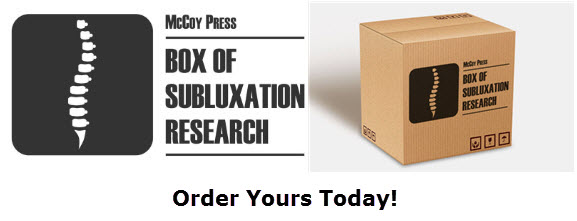
“Research is revealing that minor disturbances to spinal alignment and function may be a factor in a number of disorders. These spinal disturbances lead to nerve interference and can result in a host of health problems because the body’s homeostatic mechanism is thrown off” stated Dr. Matthew McCoy a chiropractor, public health researcher and editor of the journal that published the study. Other chiropractic researchers have reported on similar results in regards to blood pressure and chiropractic.
It makes a lot of sense when you think about it” stated Dr. McCoy, “If you damage or compress or otherwise interfere with the neurological structures in the spine this can have far reaching implications on the functioning of the body. Through research reports like this we are finding that correcting the misalignments or abnormal motion associated with these spinal problems reduces the nerve interference and people experience improvement. In this study it was a lowering of blood pressure which is a significant risk factor in relation to cardiovascular disease and is the leading cause of death in the United States.”
Once diagnosed, traditional medical treatment for increased blood pressure usually involves prescription drugs.
“Finding the cause of the high blood pressure and addressing that is a much better strategy” according to McCoy. One such risk is thought to be spinal misalignments and/or abnormal motion of the spine, termed vertebral subluxations by chiropractors, which result in structural and neurological interference to the spine and nerve system. It is this interference that may cause a cascade of neurovascular events that lead to abnormal blood pressure regulation. The theory is that once those spinal distortions are corrected the body is better able to balance its physiology and adapt to its environment.
The patient in this study was seen 18 times and adjusted by the chiropractor using diversified technique spinal adjustments. He exhibited continual improvements in blood pressure, improved autonomic function, improved range of spinal motion and quality of life.
The author calls for more research exploring the role of vertebral subluxation correction in blood pressure regulation but in the meantime patients suffering from high blood pressure should also be checked for vertebral subluxation and managed accordingly.
Contact Information:
Matthew McCoy DC, MPH
Annals of Vertebral Subluxation Research
